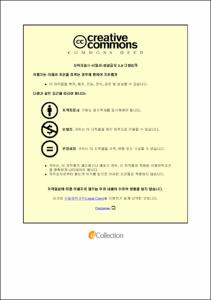다수준 분석을 이용한 응급실 간호사의 표준주의 이행 영향요인
- Issued Date
- 2020-08
- Abstract
- This cross-sectional survey investigated the factors affecting the compliance of standard precautions for emergency room (ER) nurses at individual and institutional levels, using Multilevel analysis. In total, 140 ER nurses from 9 ERs located in D and Y cities participated in the survey. Data were collected from December 2019 to February 2020. A self-reported questionnaire related to self-efficacy of standard precautions, ethical awareness, safe environments, organizational culture for infection control, and implementation of standard precautions was utilized. SPSS 23.0 Statistics program was used to analyze frequency, percentage, mean, standard deviation, t-tests, ANOVA, and Pearson's correlation coefficient. Multilevel analyses were conducted using the R studio lme4 package.
The results were as follows. First, the mean scores were 2.96 out of 4 for self-efficacy of standard precautions, 3.09 out of 4 for ethical awareness, 6.92 out of 9 for safe environments, 5.26 out of 7 for organizational culture for infection control, and 4.29 out of 5 for implementation of standard precautions. Second, the implementation of standard precautions for ER nurses showed statistically significant correlations with self-efficacy of standard precautions (r=.64, p<.001), ethical awareness (r=.46, p<.001), safe environments (r=.36, p<.001) and organizational culture for infection control (r=.54, p<.001). Third, approximately 81.1% of standard precautions implementations were affected by factors at the individual level, and 18.9% were affected by institutional factors. When the individual and institutional factors were applied to the implementation of standard precautions, the explanatory powers of the individual and institutional factors were 46.7% and 55.4%, respectively. This showed that the institutional factors had a higher explanatory power than individual factors. The individual factor that affected the compliance of standard precautions at a statistically significant level was the self-efficacy of standard precautions, while the institutional factor was organizational culture for infection control (p<.001).
Thus, to promote the compliance of standard precautions of ER nurses, it is pertinent to develop an intervention program for the enhancement of self-efficacy of standard precautions and ethical awareness, and to support and continuously manage the institution to foster the organizational culture of infection control.
본 연구는 다수준 분석을 이용하여 응급실 간호사의 표준주의 이행에 영향을 미치는 개인수준과 기관수준 요인에서 알아보기 위한 횡단적 조사연구이다. 연구대상은 D광역시와 Y광역시에 소재한 9개의 응급실에 근무하는 간호사 140명을 대상으로 하였다. 자료수집은 2019년 12월부터 2020년 2월까지 시행되었다. 연구도구는 표준주의 자기효능감, 윤리의식, 안전환경, 감염관리조직문화와 표준주의 이행과 관련된 자가보고식 설문지를 제공하였다. 자료분석은 SPSS statistics 23.0 통계프로그램을 이용하여 빈도분석, 백분율, 평균과 표준편차, t-test, ANOVA, Pearson's correlation coefficient을 분석하였고, R studio의 lme4 패키지를 이용하여 다수준 분석을 실시하였다.
본 연구의 결과는 다음과 같다. 첫째, 대상자의 표준주의 자기효능감은 4점 만점 평균 2.96점이며, 윤리의식 4점 만점 3.09점, 안전환경 9점 만점 6.92점, 감염관리조직문화 7점 만점 5.26점, 표준주의 이행 점수는 5점 만점 평균 4.29점으로 나타났다. 둘째, 응급실 간호사의 표준주의 이행과 상관관계가 있는 변수는 표준주의 자기효능감(r=.64, p<.001), 윤리의식(r=.46, p<.001), 안전환경(r=.36, p<.001), 감염관리조직문화(r=.54, p<.001)였다. 셋째, 응급실 간호사의 표준주의 이행은 약 81.1%에서 개인차의 영향을 받고, 약 18.9%는 기관 간의 차이에 영향을 받는 것으로 나타났다. 응급실 간호사 표준주의 이행의 개인수준의 설명력은 약 46.7%로 나타났고, 기관수준의 설명력은 55.4%로 개인수준의 설명변수들 보다 기관수준의 변수들의 설명력이 더 높았다. 표준주의 지침 이행에 영향을 주는 요인은 개인수준에서 표준주의 자기효능감과 윤리의식이었고, 기관수준에서는 감염관리조직문화가 통계적으로 유의하였다(p<.001).
그러므로 응급실 간호사의 표준주의 이행을 높이기 위해서는 집단 내 표준주의를 잘 이행할 수 있는 조직문화의 조성과 개인의 표준주의 자기효능감, 윤리의식 함양을 위한 노력이 함께 이루어져야 한다. 따라서 표준주의 자기효능감 및 윤리의식 증진을 위한 중재 프로그램 개발과 감염관리조직 문화 조성을 위한 기관의 지원 및 지속적인 관리가 필요하다.
- Alternative Title
- Factors Influencing Emergency Room Nurses' Compliance with Standard Precautions using Multilevel Analysis
- Awarded Date
- 2020-08
- Degree
- 석사
- Citation
- 김수정. (202008). 다수준 분석을 이용한 응급실 간호사의 표준주의 이행 영향요인.
- Type
- Thesis
- Source
- https://library.kmu.ac.kr/search/media/url/CAT000001740904
- Appears in Collections:
- 2. College of Nursing (간호대학) > 석사
- 파일 목록
-
-
Download
 THESIS-Nursing-2020-011.pdf
기타 데이터 / 681.13 kB / Adobe PDF
THESIS-Nursing-2020-011.pdf
기타 데이터 / 681.13 kB / Adobe PDF
-
Items in Repository are protected by copyright, with all rights reserved, unless otherwise indicated.